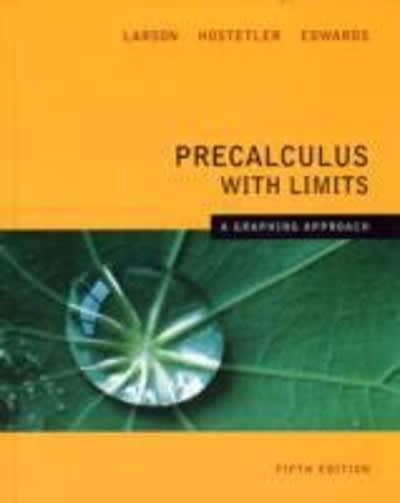Question
Suppose a couple plans to have 5 children. We are interested in the number of girls they might have. Let the random variable, X =
Suppose a couple plans to have 5 children. We are interested in the number of girls they might have. Let the random variable, X = # of girls. X is known as a discrete random variable with a binomial probability distribution. It takes on discrete (integer) values from 0 to 5, but each value is NOT equally likely. Each has a probability associated with it. Let p = probability of a girl = .52. Let (1 - p) = probability of a boy = .48. The binomial probability distribution has parameters: N=5, "success" defined as having a girl, and p(success) =.52
Make a chart that includes all possible values of X, the frequency of each outcome of X, the probability of each outcome, and the probability distribution of the random variable X.
Step by Step Solution
There are 3 Steps involved in it
Step: 1

Get Instant Access to Expert-Tailored Solutions
See step-by-step solutions with expert insights and AI powered tools for academic success
Step: 2

Step: 3

Ace Your Homework with AI
Get the answers you need in no time with our AI-driven, step-by-step assistance
Get Started


